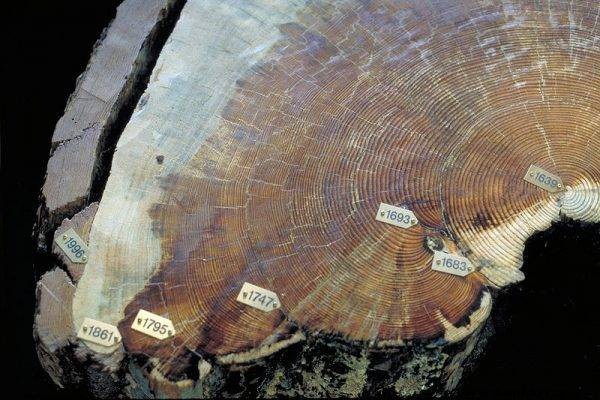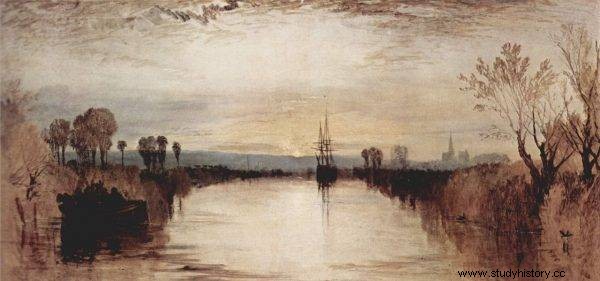On a sunny day, March 3, 1876, Mrs. Crouch, the wife of a farmer in the Olympia Springs, Kentucky area, and her grandson left the house. According to her later testimony, between 11:00 a.m. and noon, pieces of strange white matter began to rain down from the sky. At first, the boy said it was snow, but the fragments were too large, and there were no clouds. Closer examination of the scraps would reveal that ... meat rain had fallen on the Crouch's farm.
The pieces that fell from the sky were of various sizes (the largest one did not exceed the size of an open hand), and some of them appeared to be covered with a thick layer of fat. The rain itself was supposed to last several minutes and cover an area of about 100 meters by 50 meters.
Mrs. Crouch was terrified at first that the pieces of meat were left over from some tragic accident that befell her husband and son working in the field. However, when the men later returned home safe and sound, they collectively agreed that this extraordinary event was simply one of the divine signs. However, are you sure?
I can see darkness
Weather anomalies have been known to mankind for centuries. Several of them have gone down in history not only because of their scale, but also because of their uniqueness.
On May 19, 1780, the morning sky over New England and parts of Canada was darkened. The blackout was so great that the residents of the New York town of Rupert could not see the sunrise, and in Massachusetts, candles had to be lit at noon to see anything. The darkness did not go away until the next night. There were several overlapping elements behind its creation. And none of them was a sign from God, although many of those days thought so.

Annual rings of 357-year-old pine (Pinus ponderosa) with traces of five fires
New Englanders read the "day of darkness" (as it was later called) as a symbol of the imminent doomsday however, its main reason, indicated by today's researchers, was a fire in large forest areas in the province of Ontario. The blackout effect was additionally intensified by dense fog and strong cloud cover.
Some witnesses later mentioned the air that smelled of burning, as well as the presence of soot and dust in rainwater and the waters of nearby rivers and streams. Much New Hampshire has been buried with nearly 15 cm of ash.
A year without summer and animal rains
Another famous aberration that has made its mark on the pages of history was "a year without a summer." The title was hailed in 1816, when the northern hemisphere was affected by a series of violent and catastrophic weather anomalies. It was felt most strongly by the inhabitants of the northern United States, Canada and Europe. Even in June this year they were struggling with heavy and sudden snowfalls, and in July and August with sudden temperature jumps which in a few hours from hot weather could drop to 0 ° C.
Farmers paid for it huge losses. Prices for grains and other commodities skyrocketed, contributing to economic stability. For example, a bushel of oats in the US in 1815 was paid 12 cents, a year later it was 92 cents. Poor crops and food rises have plunged many communities into crisis, bringing hunger, poverty and increasing violence. However, "a year without summer" brought a positive reflection in the artistic activity.
Weather anomalies intensified various phenomena, such as sunrises and sunsets, turning them into extraordinary spectacles of nature. These in turn became an inspiration, among others for William Turner to paint many of his famous paintings.

photo:William Turner / public domain Weather anomalies intensified various phenomena, such as sunrises and sunsets, turning them into extraordinary spectacles of nature. These in turn became an inspiration, among others for William Turner
The gloomy, cold days of summer 1816 also encouraged a group of friends spending their time by Lake Geneva to let their heads of fantasy go. As a result of their joint meetings, considerations and literary games, which made them pleasant for each other, the novel "Frankenstein" by Mary Shelley was created.
The so-called "animal rains" are also known from antiquity. Fish, frogs, tadpoles, spiders, jellyfish or even worms falling from the sky, contrary to appearances, are not such a rare phenomenon. The last "cabbage soup" from frogs fell in 2011 in Uruguay, and the fish in 2017 in Sri Lanka. These anomalies are mainly caused by the action of water trunks or whirlwinds. However, as many scientists believe, there was a completely different cause behind the Kentucky meat rain.
What happened at Olimpia Springs?
The meat rain in Kentucky aroused a lot of interest - not only among the local population, but also the national press, including the scientific one. The rainfall material was collected and transported for analysis.
Local residents also had a lot to say about what fell from the skies over Olympia Springs. The brave ones even decided to taste the meat in order to identify its type. They thought it was lamb, beef, horse, or bear meat.
Ultimately, the analysis by Dr. Allan McLane Hamilton of the Newark Scientific Association pointed out that his meat fallout sample was lung tissue from either a horse or ... an infant . This thesis resulted from the great similarity of both of them in terms of structure. It was later confirmed by further research and supplemented with materials from other samples identified as muscle and cartilage.
So what happened at Olympia Springs, Kentucky on March 3, 1876? Scientists, after closely examining the whole matter, concluded that the meat rain was not the result of any weather anomaly, but an example of a defense mechanism of vultures living nearby. In times of danger, to reduce body weight and accelerate escape, they return undigested stomach contents.
